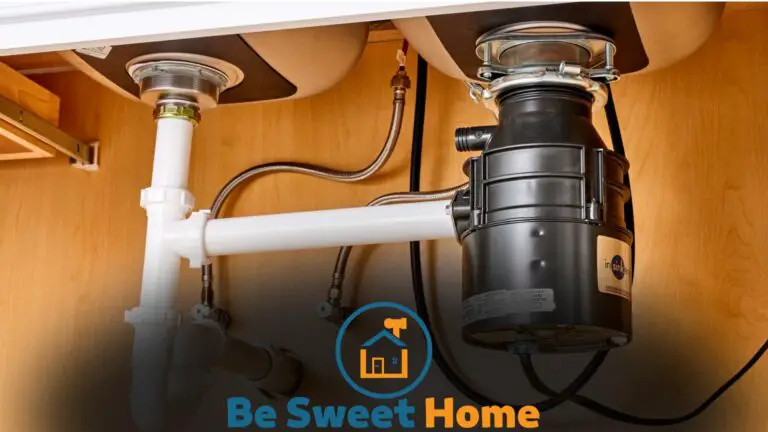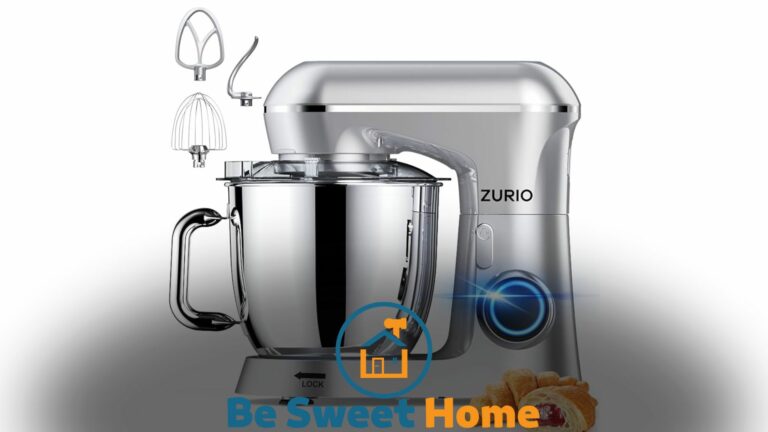

Kitchen cabinets should be thoroughly cleaned every 3 to 6 months. Routine surface cleaning can be done weekly.
Maintaining a sparkling kitchen means paying attention to the cabinetry that often takes a beating from grease, dust, and food splatters. Your kitchen cabinets, the backbone of kitchen decor, require periodic deep cleaning to keep them looking fresh and functioning well.
The exact timing may depend on the level of kitchen activity and your cooking type. Grease and grime can build up quickly in a busy kitchen, making it essential to wipe down surfaces regularly.
Tackling a deep clean every few months ensures this buildup does not cause damage or become a more significant cleaning challenge in the long run.
For households with avid cooks or bustling family kitchens, this schedule keeps cabinets in top shape and your kitchen healthy and hygienic.
The Importance of Maintaining Clean Kitchen Cabinets
The kitchen is the heart of any home, and cabinets are crucial for storage. Clean cabinets mean a healthy, beautiful kitchen. Frequent cleaning prevents damage and keeps the area safe. Let’s talk about how to protect your cabinets and your loved ones.
Protecting Wood Surfaces From Damage
Cabinet upkeep is vital for their longevity. Without regular cleaning, surfaces can suffer. They might develop stains or lose their varnish. Here’s how to maintain them:
- Wipe spills immediately to prevent staining.
- Use gentle cleaners to protect finishes.
- Avoid humidity and heat, which can warp wood.
Form a habit of cleaning cabinets weekly with a soft cloth. This protects the wood and keeps your kitchen shining.
Preventing Bacterial Growth and Pests
Unclean surfaces attract pests and bacteria. It’s more than just aesthetics. Regular cleaning keeps your family safe. Here’s your action plan:
- Disinfect surfaces to kill germs.
- Empty and clean cabinets monthly.
- Store food properly to deter pests.
Remember, a clean cabinet means a healthy space. Clean them often to maintain a pleasant kitchen environment.
Identifying When It’s Time To Clean
Kitchen cabinets need regular cleaning to stay fresh and safe. It’s easy to forget about them since they hide away dishes and food. But neglect can lead to built-up dirt. This section helps spot the right time to wield your cleaning supplies.
Visible Grime And Stains
Over time, cooking can splatter and spill, making your cabinets look dirty. Grime and stains can be clear signs. It’s time to clean. Look out for these:
- Grease stains: They often appear near handles and knobs.
- Food splatters: These are common on cabinets close to your stove.
- Spilled liquids: Dark spots can indicate a sticky mess.
Cleaning when you first spot these makes the job easier. Schedule a deep clean if multiple areas show stains.
Sticky Surfaces and Handles
A sticky texture on surfaces and handles is a tell-tale sign that it’s time to scrub down your cabinets. This usually means:
| Cause | Effects | Action |
|---|---|---|
| Humidity and grease | Surfaces feel tacky | Clean with a degreaser |
| Sugary spills | Handles are sticky | Wipe promptly |
| Regular use | Residue builds up | Weekly wipe-down |
Sticky areas catch more dirt. Take action before your kitchen feels like a trap for grime.
Factors Impacting Cabinet Cleaning Frequency
Clean kitchen cabinets are key to a healthy, sparkling kitchen. Yet, how often should you scrub those shelves and doors? Varied factors dictate the cleaning schedule. Let’s explore those now.
Cooking Habits and Grease Buildup
Your kitchen sees a mix of stir-fries, sizzling meats, and hearty stews. These dishes emit grease and vapors. They cling to cabinet surfaces. Consider these points:
- Frequent cooking means more frequent cleaning.
- Grease accumulates silently, making a sticky layer.
- Wooden cabinets need gentle, regular care to avoid damage.
Tip: Wipe cabinets with a damp cloth post-cooking. It prevents grease buildup.
Seasonal Considerations and Humidity
Kitchens face summer’s heat, winter’s chill, and fluctuating humidity. These elements affect your cabinetry. Take note of seasonal shifts:
- High moisture can warp wood and breed mold.
- Dry air in winter can crack or shrink wooden panels.
- Air circulation reduces moisture, keeping cabinets fresh.
Strategy: In humid months, clean more often. Use a dehumidifier to protect wood.
Recommended Cleaning Interval for Kitchen Cabinets
Welcome to every homeowner’s guide to maintaining a sparkling kitchen. Understanding the best interval for cleaning kitchen cabinets is crucial for their longevity and your hygiene.
While kitchen cabinets don’t require daily scrubbing, it’s important to stay on top of their cleanliness to prevent a build-up of grease, dust, and grime.
Trapped dirt compromises the cabinets’ appearance and can lead to wear and tear over time.
Routine Light Cleaning Tips
Keeping kitchen cabinets clean should be a part of your regular cleaning routine. Implement these simple tips:
- Wipe doors and handles with a soft, damp cloth.
- Use a gentle cleaner to tackle spots and spills.
- Dry thoroughly after cleaning to prevent warping.
Aim for a weekly light clean for the best results to keep your cabinets in tip-top shape.
Deep Cleaning Schedules
Twice a year, cabinets deserve a deeper clean. Here’s a simple schedule:
- Empty cabinets completely.
- Clean surfaces using a mix of warm water and dish soap.
- For tougher stains, use a baking soda paste.
- Tackle nooks and crannies with an old toothbrush.
- Finish by wiping inside and out with a soft, dry cloth.
After a deep clean, fresh cabinet liners and reorganizing contents add the perfect touch.
Best Practices for Cabinet Cleaning
Best Practices for Cabinet Cleaning ensure your kitchen maintains not only its aesthetic appeal but its hygiene as well.
Regular maintenance wards off grime and preserves the integrity of your cabinets. Stick to a routine and use proper methods to keep cabinets in top-notch condition.
Choosing Safe and Effective Cleaners
For cabinets, selecting the right cleaners is crucial. Avoid harsh chemicals that can strip finishes or leave harmful residues. Opt for gentle, eco-friendly options that are tough on dirt but safe for most surfaces.
Here’s a quick list of effective cleaners:
- Mild dish soap and warm water mixture
- Diluted white vinegar solution for grease
- Baking soda for stubborn stains
Certain cabinet materials like wood may require specific wood-cleaning products. Always follow the manufacturer’s guidelines for specialized treatments.
Proper Techniques To Avoid Damage
Good technique is as important as the right cleaner. To prevent damage to cabinets, follow these steps:
- Test cleaners in an inconspicuous spot.
- Use soft cloths or sponges to apply cleaners gently.
- Avoid soaking cabinets; wring out clothes well.
- Dry promptly with a soft towel to prevent moisture damage.
Gentle, circular motions help lift dirt without scratching surfaces. Frequent light cleaning is better than allowing grime to build up and resorting to aggressive scrubbing.
Maintaining Cleanliness Between Major Cleanings
Keeping kitchen cabinets clean is not just about the occasional deep clean.
For a sparkling kitchen, regular maintenance is key.
By integrating simple habits into the daily routine, cabinets will stay fresh. This reduces the need for major cleanings over time.
Below are practical tips to maintain cleanliness every day.
Daily Habits To Keep Cabinets Fresh
Daily upkeep can make a huge difference. Here are easy habits to adopt:
- Wipe down cabinets after cooking to remove splatters.
- Use a soft cloth to dust off the doors and handles.
- Organize the contents to prevent clutter.
- Avoid hanging damp towels over cabinet doors.
Quick Spot Treatments and Wipes
Spot cleaning tackles blemishes without much effort. Here’s how to do it quickly:
- For spills: Use a damp cloth to wipe immediately.
- For stickiness: A mixture of water and vinegar works well.
Spritz and wipe with a soft cloth for a streak-free finish.
| Type of Spot | Cleaning Agent | Tool |
|---|---|---|
| Fingerprints | Soapy Water | Microfiber Cloth |
| Grease | Diluted Vinegar | Soft Sponge |
| Stains | Baking Soda Paste | Damp Rag |

Frequently Asked Questions
What’s the Ideal Frequency for Cleaning Cabinets?
Kitchen cabinets should be thoroughly cleaned every one to three months, depending on usage and kitchen activity.
Can I Use Vinegar To Clean Wood Cabinets?
Yes, an equal parts water and vinegar solution safely cleans wood cabinets but avoids excessive moisture.
What Removes Grease From Kitchen Cabinetry?
Diluted dish soap or a baking soda paste effectively removes grease from kitchen cabinetry without causing damage.
Best Natural Cleaner for Cabinet Surfaces?
Baking soda and lemon juice are powerful natural cleaners for tackling grime on cabinet surfaces.
Tips for Maintaining Clean Kitchen Cabinets?
Regular dusting, immediate spill cleanup, and periodic deep cleaning help maintain pristine kitchen cabinets.
Conclusion
Maintaining a clean kitchen ensures a hygienic cooking environment. Aim to wipe down your cabinets weekly and deep clean monthly.
Adhering to this cleaning schedule will keep your cabinets in prime condition. Embrace the sparkle and enjoy a fresher kitchen space today!







